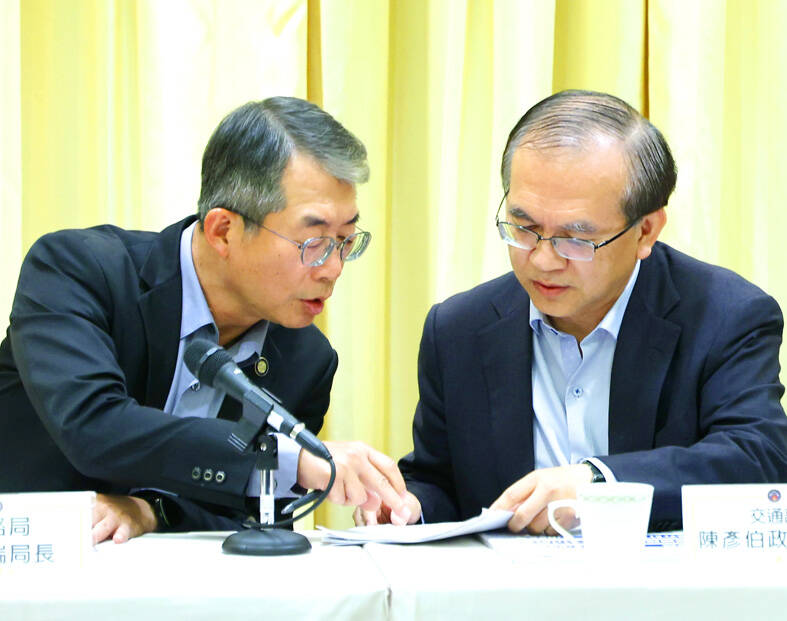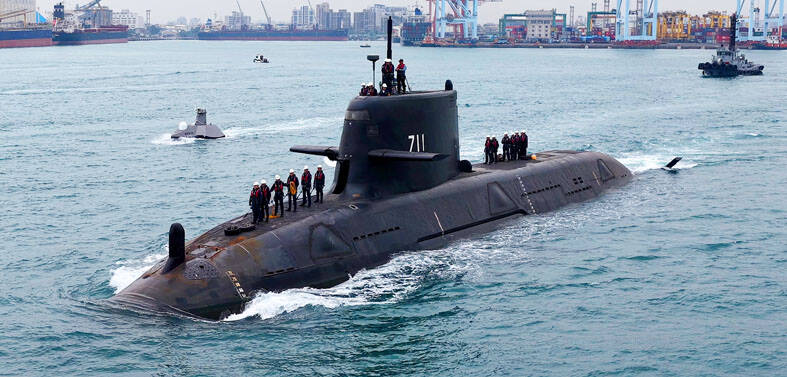The Ministry of Transportation and Communications yesterday denied that it rejected a plan to build an expressway connecting Hualien and Taitung counties, adding that the project is in the feasibility assessment phase.
“We have completed a preliminary review of the project, and the Highway Bureau has been asked to provide more details. The assessment would focus on the feasibility of constructing the expressway in sections,” Deputy Minister of Transportation and Communications Chen Yen-po (陳彥伯) told reporters at a news conference in Taipei.
In previous assessments, the cost-benefit of building the expressway was smaller than 1, Chen said, adding that it agreed to reconsider the project after improvements to the transportation infrastructure on the east coast.

Photo: CNA
“The bureau should assess how the expressway would change Hualien and Taitung counties and the tourism industry there. It should also include in its assessment the size and costs of the construction and how it would connect other corridors on the east coast,” he said.
Highway Bureau Director-General Chen Wen-juei (陳文瑞) said that the agency began reassessing the feasibility of building the expressway following a motion passed at the legislature in 2019.
The area assessed by the bureau stretches 174km from Hualien County’s Chungde Village (崇德) south to Taitung City.
Experts were invited to review the project, from the handling of earthworks, funding and economic benefits that the project could generate to its potential effects on the environment and landscape, Chen Wen-juei said.
The bureau last year began hosting information sessions in areas that could be affected by the project, he said.
Based on the Highway Bureau’s plan, the 3km section from Chungde to Hualien County’s Hsincheng Township (新城) could be constructed first, at an estimated cost of about NT$9 billion (US$273.39 million). It could serve as an extension of a section of the Suhua Highway Safety Enhancement Project.
Construction costs of the about 27km section from Hsincheng to Jian Township (吉安) are estimated at NT$90 billion.
The total cost of the highway could reach NT$361.4 billion.
In the past eight years, the ministry has spent NT$326.4 billion on transportation infrastructure projects on the east coast, including NT$104.7 billion on railway projects and NT$221.7 billion on highway projects, ministry data showed.
Of the highway projects, the Suhua Highway Safety Enhancement Project is to cost NT$105.6 billion.
Separately, the Railway Bureau said that it did not reject a plan for the construction of a Keelung MRT system, adding that it is reviewing the project.
The New Taipei City Government, which is in charge of building and operating the system, first submitted the construction plan on Dec. 16 last year, with the construction cost reaching NT$126.154 billion, Railway Bureau Director-General Yang Cheng-chun (楊正君) told reporters.
However, the city’s estimated cost had exceeded the approved funding cap of NT$69.589 billion, Yang said.
Following the bureau’s review in January, the city government submitted a revised construction plan on Feb. 12, which the bureau is reviewing, he said.

US climber Alex Honnold is to attempt to scale Taipei 101 without a rope and harness in a live Netflix special on Jan. 24, the streaming platform announced on Wednesday. Accounting for the time difference, the two-hour broadcast of Honnold’s climb, called Skyscraper Live, is to air on Jan. 23 in the US, Netflix said in a statement. Honnold, 40, was the first person ever to free solo climb the 900m El Capitan rock formation in Yosemite National Park — a feat that was recorded and later made into the 2018 documentary film Free Solo. Netflix previewed Skyscraper Live in October, after videos

NUMBERS IMBALANCE: More than 4 million Taiwanese have visited China this year, while only about half a million Chinese have visited here Beijing has yet to respond to Taiwan’s requests for negotiation over matters related to the recovery of cross-strait tourism, the Tourism Administration said yesterday. Taiwan’s tourism authority issued the statement after Chinese-language daily the China Times reported yesterday that the government’s policy of banning group tours to China does not stop Taiwanese from visiting the country. As of October, more than 4.2 million had traveled to China this year, exceeding last year. Beijing estimated the number of Taiwanese tourists in China could reach 4.5 million this year. By contrast, only 500,000 Chinese tourists are expected in Taiwan, the report said. The report

Temperatures are forecast to drop steadily as a continental cold air mass moves across Taiwan, with some areas also likely to see heavy rainfall, the Central Weather Administration (CWA) said. From today through early tomorrow, a cold air mass would keep temperatures low across central and northern Taiwan, and the eastern half of Taiwan proper, with isolated brief showers forecast along Keelung’s north coast, Taipei and New Taipei City’s mountainous areas and eastern Taiwan, it said. Lows of 11°C to 15°C are forecast in central and northern Taiwan, Yilan County, and the outlying Kinmen and Lienchiang (Matsu) counties, and 14°C to 17°C

STEERING FAILURE: The first boat of its class is experiencing teething issues as it readies for acceptance by the navy, according to a recent story about rudder failure The Hai Kun (海鯤), the nation’s first locally built submarine, allegedly suffered a total failure of stern hydraulic systems during the second round of sea acceptance trials on June 26, and sailors were forced to manually operate the X-rudder to turn the submarine and return to port, news Web site Mirror Daily reported yesterday. The report said that tugboats following the Hai Kun assisted the submarine in avoiding collisions with other ships due to the X-rudder malfunctioning. At the time of the report, the submarine had completed its trials and was scheduled to begin diving and surfacing tests in shallow areas. The X-rudder,